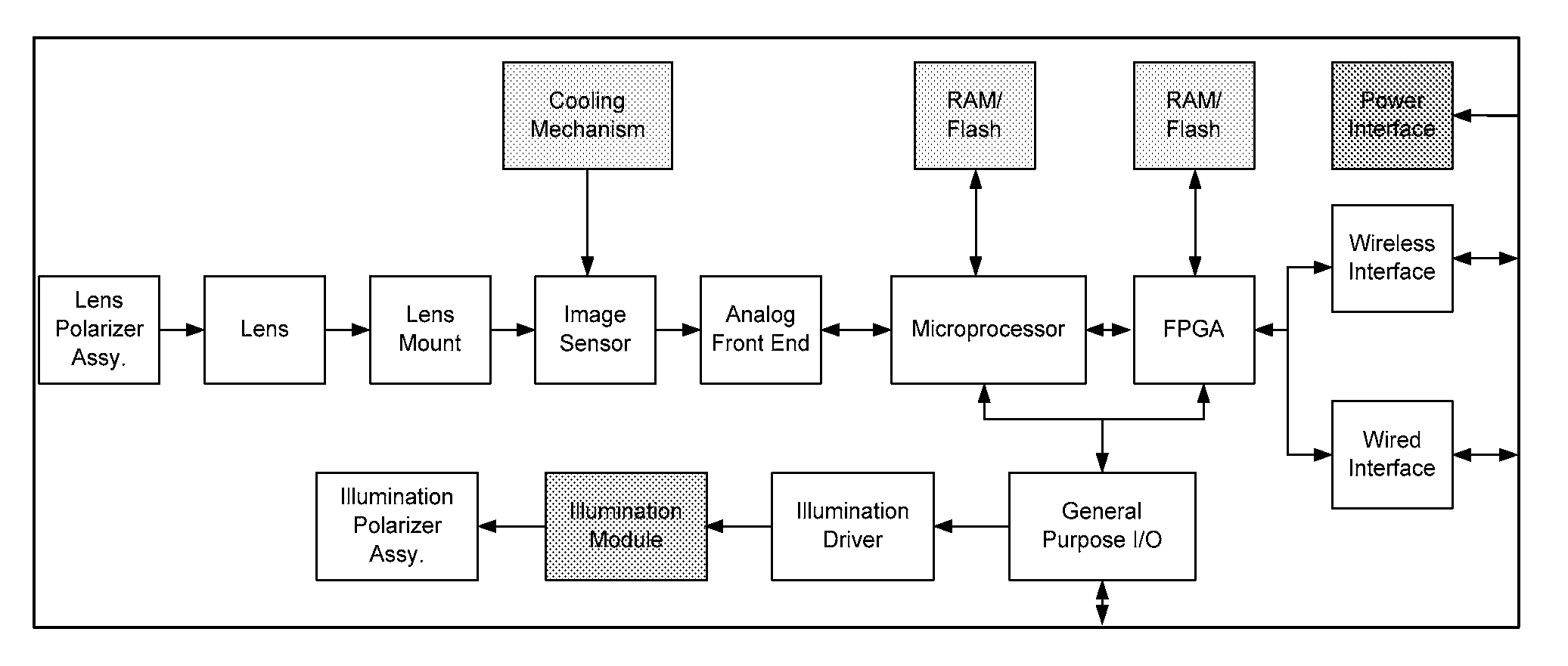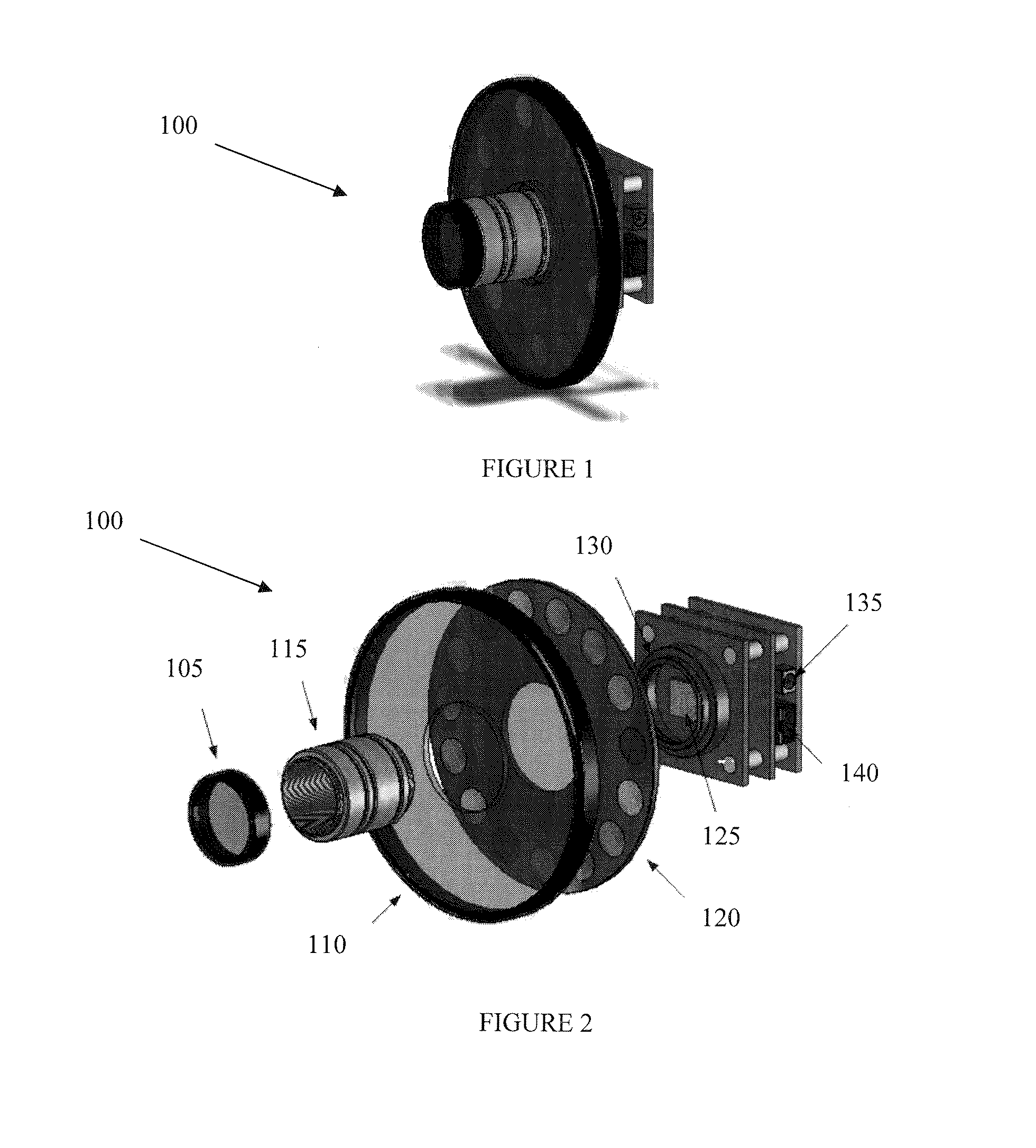Miniaturized multi-spectral imager for real-time tissue oxygenation measurement
a multi-spectral imager, real-time technology, applied in the field of multi-spectral imaging, can solve the problems of few techniques that can demarcate, few techniques that can be used, and the raw spectral or imaging measurement seldom reveals directly the property of clinical interest, so as to achieve the convergence of correct alignment more quickly and more reliably
- Summary
- Abstract
- Description
- Claims
- Application Information
AI Technical Summary
Benefits of technology
Problems solved by technology
Method used
Image
Examples
Embodiment Construction
[0038]As embodied and broadly described herein, the disclosures herein provide detailed embodiments of the invention. However, the disclosed embodiments are merely exemplary of the invention that may be embodied in various and alternative forms. Therefore, there is no intent that specific structural and functional details should be limiting, but rather the intention is that they provide a basis for the claims and as a representative basis for teaching one skilled in the art to variously employ the present invention.
[0039]A problem in the art capable of being solved by the embodiments of the present invention is producing a miniaturized medical multi-spectral imaging (MSI) sensor capable of providing real-time measurements of oxygen saturation StO2t in skin, serving as an excellent indicator of oxygenation status in patients with multiple medical conditions, including but not limited to diabetes, wound care, vascular disease and pressure ulcers as well as providing an early warning f...
PUM
 Login to View More
Login to View More Abstract
Description
Claims
Application Information
 Login to View More
Login to View More - R&D
- Intellectual Property
- Life Sciences
- Materials
- Tech Scout
- Unparalleled Data Quality
- Higher Quality Content
- 60% Fewer Hallucinations
Browse by: Latest US Patents, China's latest patents, Technical Efficacy Thesaurus, Application Domain, Technology Topic, Popular Technical Reports.
© 2025 PatSnap. All rights reserved.Legal|Privacy policy|Modern Slavery Act Transparency Statement|Sitemap|About US| Contact US: help@patsnap.com



